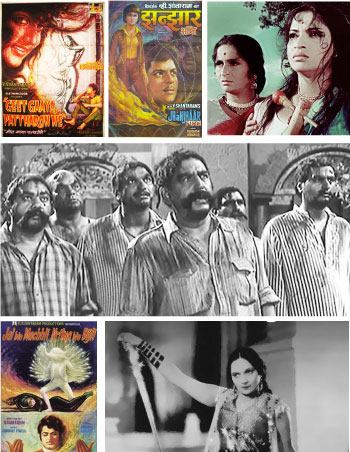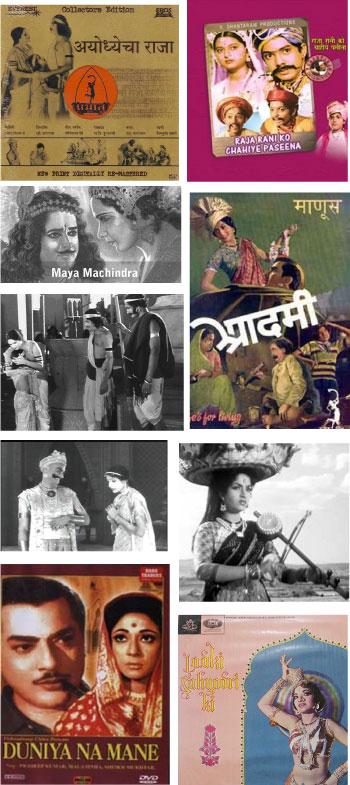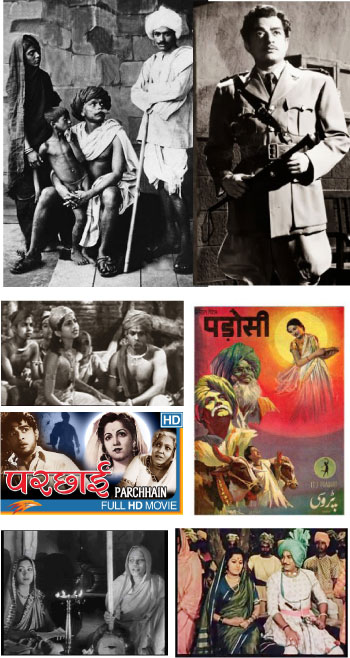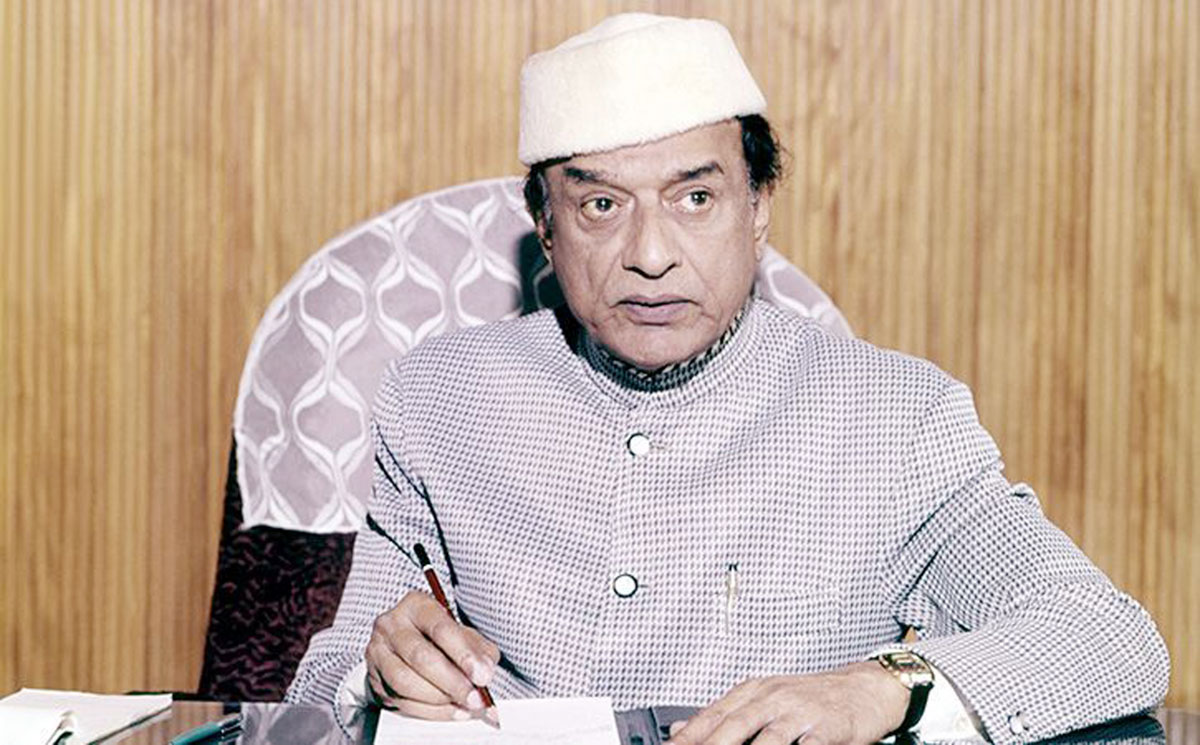V. Shantaram “The Man who Changed Indian Cinema “
To call V Shantaram a pioneer would be an understatement as the filmmaker’s prodigious body of work has numerous instances where his genius shines across. But more than the technical finesse or literary value he instilled within his cinema, he understood the medium’s power to bring about a social transformation
 In the much-lauded The New York Trilogy, American author Paul Auster leaves his reader with a notion that every life, no matter how many facts or details are given, in the end is inexplicable. Auster suggests that each life is nothing more than the sum of contingent facts, a chronicle of chance intersections, of flukes, of random events that divulge nothing but their own lack of purpose. Yet these are the very facets that make some lives worth talking about.
In the much-lauded The New York Trilogy, American author Paul Auster leaves his reader with a notion that every life, no matter how many facts or details are given, in the end is inexplicable. Auster suggests that each life is nothing more than the sum of contingent facts, a chronicle of chance intersections, of flukes, of random events that divulge nothing but their own lack of purpose. Yet these are the very facets that make some lives worth talking about.
Insightful as this might be, biographies wouldn’t principally agree with Auster’s observation as a life’s chance intersections is what makes them worth chronicling and among them are the ones that explore the lives of artistes, in fact, more specifically film personalities.
Cinema impacts millions of lives across nations, times, and social conditioning in an unlikely manner and the men and women who create this connection aren’t accessible or even visible in the manner, say, a politician or a sportsperson might be and, therefore, the biography of a filmmaker assumes a more significant role than it ordinarily would.
It’s interesting that while films and their stars transcend the invisible boundary that separates them from the viewer, filmmakers, however, rarely manage to connect with the viewer. More often than not, their larger than life persona ends up defining them. In spite of such an imposing presence, the life of a filmmaker is rarely seen beyond the edifice of a tormented artiste, like in the case of Guru Dutt or an open book that has nothing worth reading into anymore, such as Raj Kapoor.
The tradition of film biographies in India, till some years ago, was the bastion of either those who knew their subjects intimately or had interacted with them in a professional capacity. As a result, these treatises were either a summation of achievements or hagiographies that somewhere refused to treat their subjects as real people.
Amid the different kinds of biographies, the ones that seem to be the best, as observed by Orson Welles, are the kinds where the biographer is present too. As one of the most talked about filmmakers ever, Welles’ point is worth pondering over as he was not only one of the first filmmakers to be venerated as a cult figure or a demigod but also someone who saw this happen in his own lifetime.
The best example of Welles’s argument is the iconic Hitchcock: Truffaut (1967) where the then five films old François Truffaut got the ordinarily guarded director Alfred Hitchcock to open up unlike ever before. As a film critic, Truffaut had championed the cause of considering the works of Hitchcock as art in addition to the wildly successful formulaic commercial ventures that they had been viewed as, and the density of insights into the cinematic questions in the long interview continues to ravish readers even after nearly five decades.
In an Indian context, the works of Nasreen Munni Kabir have had a similar impact on a sub-genre of biographies and her book-length biographical conversations, with personalities in Hindi film industry such as Javed Akhtar (Talking Films: Conversations on Hindi Cinema with Javed Akhtar, 2002), Lata Mangeshkar (Lata Mangeshkar — In Her Own Voice, 2009), Gulzar (In the Company of a Poet, 2012), offer great insight into some of the biggest names in Hindi cinema. The direct access that Truffaut or Kabir enjoyed with the subjects, and their familiarity with not just the works of the artistes they chronicled but also the artistes themselves, allows the reader, who, in many cases is also accustomed with the subject, to reassess their body of work and even rediscover the oeuvre after getting to know the persona.
But closeness isn’t always a good thing. A recent biography of V Shantaram written by the legendary filmmaker’s daughter, Madhura Pandit Jasraj, is one example where proximity, if anything, comes across as a bane than an advantage. Even by the end, one barely gets to know anything substantial about the man behind the facade, as the book doesn’t try hard to rise above being a straight birth to death with important milestones peppered in between kind of fact sheet.
A decade before the pioneering actor-filmmaker passed away on October 30, 1990, he started narrating his life’s experiences to his daughter, Madhura, who was assigned the task of transcribing as well as co-writing V Shantaram’s autobiography, Shantarama, which was later translated into Hindi from Marathi. Although Madhura’s V Shantaram: The Man Who Changed Indian Cinema (2015) is not the first biography of the filmmaker, but unlike V Shantaram, The Legacy of the Royal Lotus (2003) that took its name from the film studio, Raj Kamal Kala Mandir, that Shantaram formed, it can be seen as hybrid of a biography and the English version of the filmmaker’s autobiography.
Both books were written by Shantaram’s children; Kiran V Shantaram, who wrote The Legacy of the Royal Lotus, isShantaram’s son from his second marriage with Jayashree, while Madhura was born to his third wife, Sandhya, and in that aspect both enjoy a ring-side view of their father’s illustrious six-decade career.
Fondly known as Annasaheb, Shantaram’s contribution to Indian cinema in general is perhaps unparalleled and although he continues to be revered across both Marathi and Hindi cinema, his isn’t the first name that pops up when one thinks of the doyens of Indian cinema. To call Shantaram a pioneer would be an understatement as the filmmaker’s prodigious body of work has numerous instances where his genius shines across, but more than technical finesse or the literary value that he instilled within his cinema, he understood the medium’s power to bring about a social transformation.
However, popular film literature somewhere ends up crediting Mehboob Khan with Aurat (1940) or Najma (1943) or even Raj Kapoor as the first among equals when it comes to popular cinema having a humane outlook. Irrespective of the impact that Mehboob or Kapoor’s films might have had on society, neither could achieve the kind of effect that Shantaram’sDahej (1950) had on not just the general public but also the lawmakers of the newly independent country. Dahej was credited by the Bihar Assembly as one of the inspirations to table and become the first Indian State to pass the Dowry Restraint Act (1950), and later was even screened for MPs in the National Parliament when the Anti-dowry Bill was tabled.
Having started his career at the age of 19, Shantaram began working in the era of silent cinema as an assistant to Baburao Painter and an actor in Surekha Haran (1921). Shantaram was all of 13 when he convinced his father to allow him to join a travelling theatre company, Gandharva Natak Mandali, under Govindrao Tembe, who was taken in by the young boy’s acting and mimicry skills. Shantaram learnt to dance while touring with the theatre and having impressed everyone with his acting skills within a short span of time, the boy was poised to go places but decided to quit the company when he couldn’t convincingly answer a question his father asked him.
 At the end of his first year with the Gandharva Natak Mandali, Shantaram had come home for a vacation and when his father asked him what he learnt in that one year, he realised that beyond a bit of dance and a few cameos he had largely wasted the year. Shantaram went back to school and after graduating struggled with odd jobs till one day his cousin, Baburao Pendharkar, who worked for the Maharashtra Film Company, came visiting with a print of Sairandhri (1920) to Hubli, where Shantaram’s father had shifted to. The young man saw the film more than once and was awestruck and decided to join the same company.
At the end of his first year with the Gandharva Natak Mandali, Shantaram had come home for a vacation and when his father asked him what he learnt in that one year, he realised that beyond a bit of dance and a few cameos he had largely wasted the year. Shantaram went back to school and after graduating struggled with odd jobs till one day his cousin, Baburao Pendharkar, who worked for the Maharashtra Film Company, came visiting with a print of Sairandhri (1920) to Hubli, where Shantaram’s father had shifted to. The young man saw the film more than once and was awestruck and decided to join the same company.
It was his mentor, Baburao Painter, who inspired Shantaram to never say no to any work in the studio and within a few years there wasn’t a single department that Shantaram had not apprenticed under. Shantaram’s stint at the Maharashtra Film Co mirrors the early years of Hitchcock, who in a similar fashion, started as a title card designer and dabbled in the art, writing and assisting departments before becoming a director.
Unlike Hitchcock, Shantaram’s first credit as a director, Netaji Palkar (1927), was a success and even featured innovating lighting techniques to shoot night battle scenes. As opposed to the standard norm of using firecrackers to light up the night scenes, Shantaram filled a cannon with gunpowder and lit it to produce intermittent flashes that created a more dramatic effect.
At Prabhat, the company he formed with colleagues who left Maharashtra Film Company along with him, Shantaram made his first talkie, Ayodhya Ka Raja (1932), whose Marathi version Ayodhyeche Raja was the first talkie in Marathi besides being the first film where the visuals and audio were recorded on separate devices and synched during post-production.
Many people don’t associate Shantaram with India’s first colour film, but it was Prabhat Film Company where he directed a remake of Baburao Painter’s Sairandhri (1932) that holds this distinction. In addition, Shantaram also made India’s first children’s film (Rani Saheba, 1930), the first Indian animation film sometime in the mid-1930s — a nine-minute short film that featured a hand-drawn fox called Jambu Kaka and was shown before Chandrasena (1935), and was also the first Indian filmmaker to enjoy a silver jubilee run with Amrit Manthan (1934).
By the time Madhura was born in 1937, Shantaram was a well-established filmmaker who was respected by his peers as well stalwarts such as Dhundiraj Govind Phalke, the man who made India’s first filmRaja Harishchandra (1913). Towards the end of the 1930s, Dadasaheb Phalke had fallen on bad times and sent someone to call Shantaram to come visit him. Shantaram was moved beyond words when he saw the dire condition that the father of Indian cinema was living in and was terribly embarrassed when Dadasaheb asked him to loan some money on a monthly basis to make ends meet. Shantaram and his partners at Prabhat immediately started sending a fixed amount every month to the grand old man of Indian cinema and the two even began to keep in touch through letters, which Shantaram cherished and preserved till the very end.
One of Shantaram’s films Manoos (1939), which was released as Aadmi in Hindi, had impressed Charles ‘Charlie’ Chaplin who was moved by the poignancy with which Shantaram directed the love story of a police constable and a prostitute. Shantaram’s brilliance was a result of the openness with which he approached filmmaking and although a collaborative effort, Shantaram’s all-round prowess was the X-factor that made all the difference between his productions and others. He was also amongst one of the first people to interact with progressive writers in Marathi literature such as Anant Kanekar, Hari Narayan Apte and Vishram Bedekar to write his scripts and never shied away from using cinema as a tool for social messaging.
By the 1940s, Shantaram had made many films that were laden with nationalistic ideology but packaged in the garb of a historical to avoid the wrath of the British censors. In the early 1940s, he even made a film that addressed the communal tension in the country that had reached a flashpoint. Set against the backdrop of rising communal violence, the highly symbolicShejari (1942), released in Hindi as Padosi, recounted the experiences of two friends: A Hindu and a Muslim living in neighbouring houses, both of whom work as labourers at a dam being constructed near their village. It is said that real life religious riots in Bhagalpur, Bihar, ceased following the film’s release in the area.
While V Shantaram: The Man Who Changed Indian Cinema diligently traverses the filmmaker’s life, it somehow ends up telling precious little about the person behind the spotlight. Even at a basic level, Shantaram is the perfect embodiment of what Nietzsche said of an artiste — someone who shouldn’t be under obligations to accommodate himself to a power whose strength is merely in numbers.
While there is no similarity between the personal lives of Hitchcock and Shantaram, could the latter’s persona, too, somewhere influence his cinema like in the case of the former? The well-documented abject darkness of Hitchcock’s genius that includes him mentally, and sexually, harass some of his leading ladies such as Tippi Hedren during the making of The Birds (1960), or his use of his films to project the creepy desires he couldn’t act on in his own life is now considered a major contributor to the way the filmmaker thought.
For a man who swam against the tide, Shantaram’s entire life was an intrepid fight to be accepted as someone who is different but not disconnected. He often got on the wrong side of people due to his anger issues and, as suggested by the book, many a times simply chose to walk away than resolve issues, whether personal or professional. In the 60 years that he spent in cinema, Shantaram had many professional fallouts, but Madhura barely explores this. Her narrative talks about Shantaram feeling angry or let down by his business partners, but he overcomes it by immersing himself in work. She doesn’t seem to warrant more than what-meets-the-eye kind of significance to events in a filmmaker’s personal life when it comes to impacting creativity.
She also chooses to largely ignore Shantaram’s state of mind during his three marriages and keeps the description perfunctory. Most importantly, she doesn’t feel the need to include archival points of views of her father’s contemporaries and other family members such as stepbrother Kiran V Shantaram, who assisted their father and even directed a few films for Raj Kamal Kala Mandir.
Shantaram reached the zenith years before even the grandparents of the current generation were born and the lack of ready access in this day and age to some of his finer works such as Manoos, Sant Tukaram and Dahej only makes it difficult for them to connect with a true master of images. Many young people can’t think of Shantaram beyond the visual and musical feast Jhanak Jhanak Payal Baaje (1955) or the kaleidoscopic melange of songs and set pieces Navrang (1959) and today, even one of his most significant achievements as a storyteller, Do Aankhen Barah Haath (1957), is largely recalled for the song Aye maalik tere bande hum instead of the messaging and the treatment.
Inspired by a true incident of an open prison experiment, the film won a Silver Bear at the 8th Berlin International Film Festival and was also the first Indian film to win a Golden Globe Award (Samuel Goldwyn Award). Shantaram almost lost his eyesight during the scene where his character, a warden who rehabilitates six hardened criminals released on parole, fights a bull.
Dr Kotnis Ki Amar Kahani (1946), a film based on the true-life heroics of Dwarkanath Kotnis, an Indian doctor who worked in China during the Japanese invasion in World War II, too, is a film that might look dated but the filmmaker’s technique is sure to intrigue film aficionados regardless of the fact that it was released almost 70 years ago. Made during a period where film stock was rationed, Shantaram designed the pivotal scene where Kotnis (Shantaram) grapples with the dilemma of setting up a clinic in his hometown, Sholapur, or going to China in a single shot to minimise wastage of raw stock. Filmed after two days of intense rehearsals where the cinematographer viewed the entire proceedings through the camera in order to perfect the blocking and camera movement, the 780-feet-long single shot featured multiple angles with altering magnification and intricate trolley movement and was canned in one take.
While a revival of interest in Shantaram’s works such as this scene, which could enjoy a Citizen Kane-esque dissertation, there are numerous instances of technical expertise in Shantaram’s films that were followed later by others. In fact, along with the unique ‘one scene, one shot’ technique in Dr Kotnis Ki Amar Kahani, in a song that Shantaram filmed in the 1930s, he used two fire torches in front of the camera as a cutting point to make the shots looks seamless and give a sense of a single take predates Hitchcock’s craftsmanship in his ‘single continuous shot’ film Rope (1948).
Film biographies are an essential tool to not just celebrate the works of Hitchcock, Guru Dutt, Welles or Shantaram, but also a chance to possibly get to know the people behind. Their cinema, of course, continues to be a device but in a way biographies are now perhaps the only link left to interpret filmmakers who existed in the first half of the 20th century and it’s unfortunate that Shantaram, the man within the artiste, couldn’t be deciphered to some degree by someone as close as his own daughter.
In The Sense of an Ending, Julian Barnes muses that the longer life goes on, the fewer are those around to challenge our account. In Conversations with Waheeda Rehman (2014), Nasreen Munni Kabir managed to make the reticent star tell the story of her life and also aspects of the lives of Guru Dutt, Abrar Alvi, Dev Anand, Raj Khosla and Raj Kapoor, who she co-existed with and even when she didn’t speak as openly as expected on certain topics, the manner in which Rehman didn’t say said it all.
Sometimes a life isn’t an individual’s life but merely the story that they have told about their life. These are then lived by an entire collective consciousness and a rediscovery like the one initiated by Akshay Manwani’s Sahir: The People’s Poet (2013) rejuvenates the artiste for the next generation.
In Guru Dutt: A Tragedy in Three Acts (2012) Arun Khopkar, the award-winning filmmaker and film scholar, ventured beyond the aura of the suffering artiste and succinctly analysed the filmmaker’s cinema and passion along with the madness that accompanied it.
There is nothing surprising about Madhura adjusting the legend or embellishing it with sly cuts to tell others the story of her father, but sadly in the end, V Shantaram: The Man Who Changed Indian Cinema becomes a tale told not to others as much as it is to her own self.
 V Shantaram’s Movies
V Shantaram’s Movies
As Actor
“Surekha Haran” (1921)Sinhagad (1923)Savkari Pash (1925)Stri (1961)Parchhain (1952)Do Ankhen Barah Haath (1957)
As Producer
Banwasi (1948)Sehra (1963)Geet Gaya Patharon Ne (1964)Ladki Sahyadri Ki (1966)Jal Bin Machhli Nritya Bin Bijli (1971)Raja Rani Ko Chahiye Pasina (1978)Jhanjhaar (1987)
As Director
Maharashtra Film Company Netaji Palkar (1927)Prabhat Film CompanyGopal Krishna (1929)Udaykal (1930)Rani Saheba (1930)Khooni Khanjar (1930)Chandrasena (1931)Maya Machindra (1932)Agnikankan (1932)Ayodhyecha Raja (1932)Sinhagad (1933)Sairandhri (1933)Amrit Manthan (1934)Dharmatma (1935)Chandrasena (1935)Amar Jyoti (1936)Duniya Na Mane (1937)Kunku (1937)Manoos (1939)Aadmi (1939)Padosi (1941)


